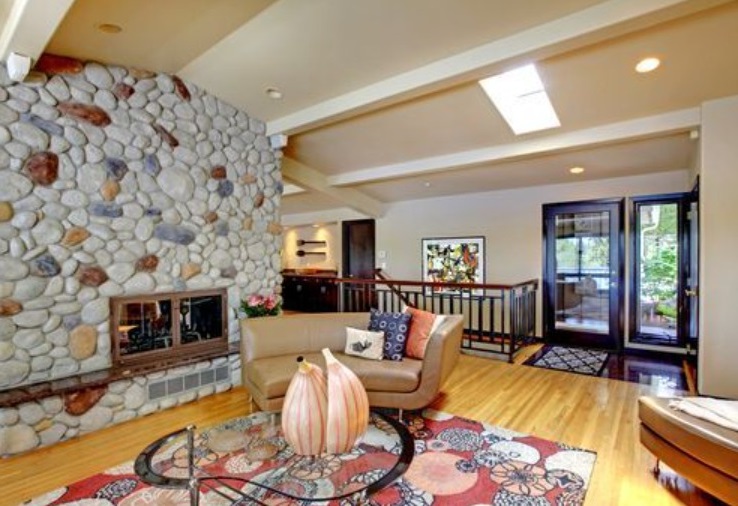Exposed brick ensures coziness and a feeling of slowing down – whether real or faux, we show you how to get the look
Yes, who doesn’t love staying in a small quarry cottage in the countryside sometimes? Peace, slowdown and attention to nature – we combine all this with beautiful natural brick and stone. At the same time, stone walls convey a sense of security and stability. For those who don’t have a cottage, we will show you various ways to expose the masonry or create a living room wall with an artificial stone look.
Real stone walls: Use existing resources
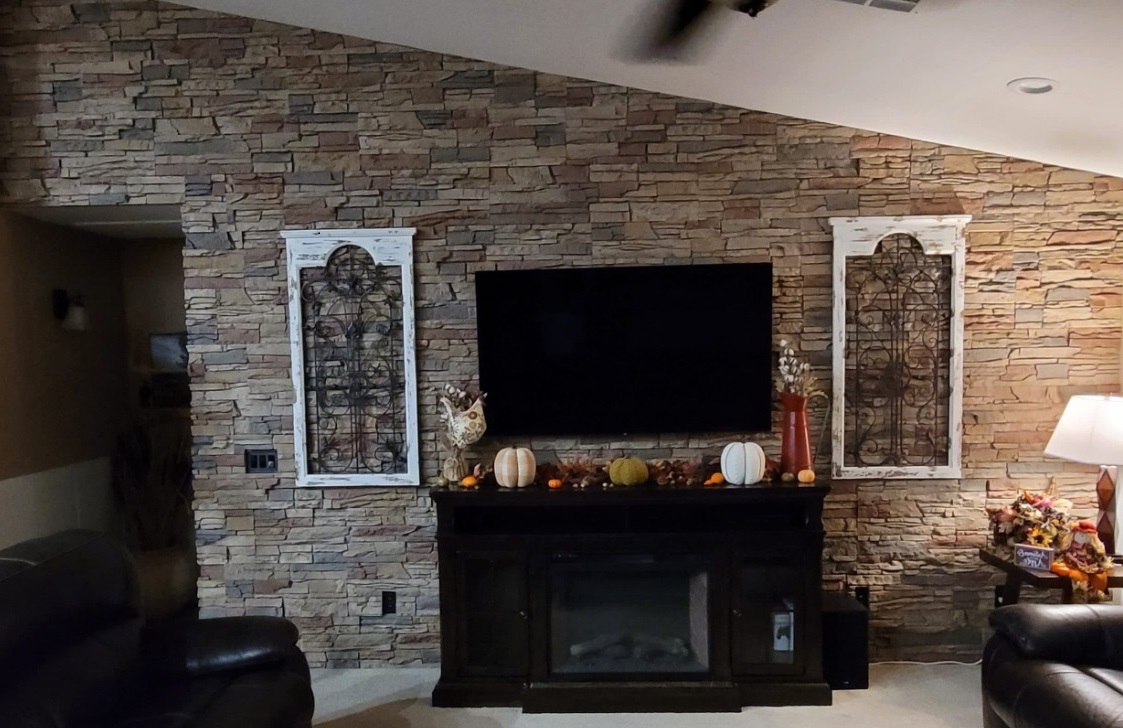
Industry: exposing bricks
Take advantage of the hidden potential in your home or apartment by first getting an idea: What’s behind the plaster or wallpaper? If it’s brick or even natural stone, you can consider yourself lucky. However, before you start exposing the masonry, please be aware that it requires many steps and a lot of background knowledge.
Therefore it is best to consult a professional who can help you.
In this example, the recess between two utility shafts is used to install a bookshelf. Cleverly placed points of light reveal the masonry structure beautifully.
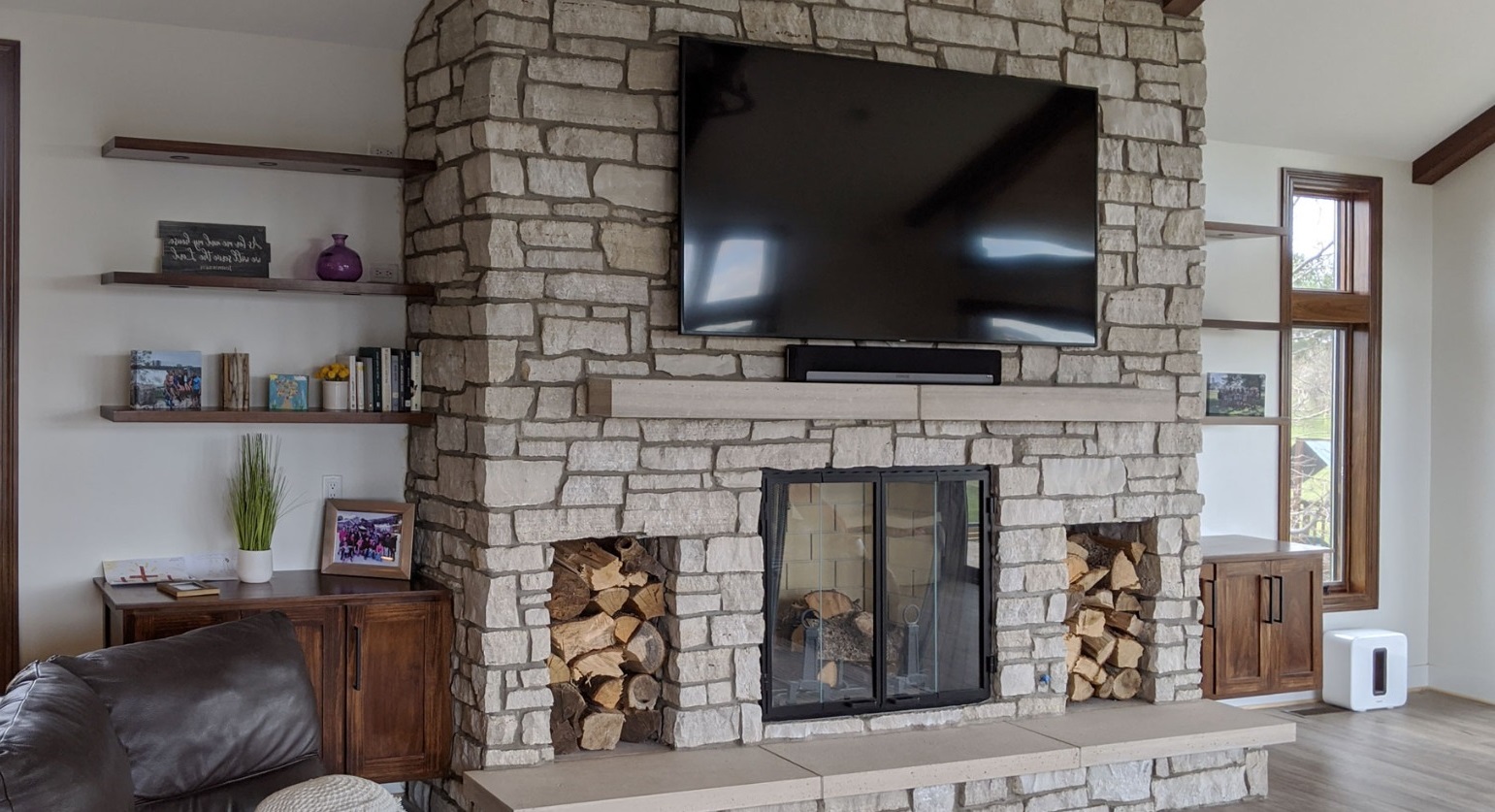
Zoomed out: light brick wall paint
Brick walls have a strong influence on a room. Because bare masonry quickly appears bulky, it is sometimes advisable to only expose certain areas of the wall, such as chimneys, pillars, or niches. Also think about which walls in your apartment look empty and can be highlighted and which furniture you want to combine with these open areas.
In this project in Minneapolis, the walls are the secret star. You can see his past. Today, traces of renovation and vandalism in the form of graffiti keep the area vibrant.
Here the masonry is visible, above which the roof construction begins with ring anchors. Even though the brick area is relatively small, it still creates a rustic impression. In combination with modern wooden furniture, a successful combination is created.
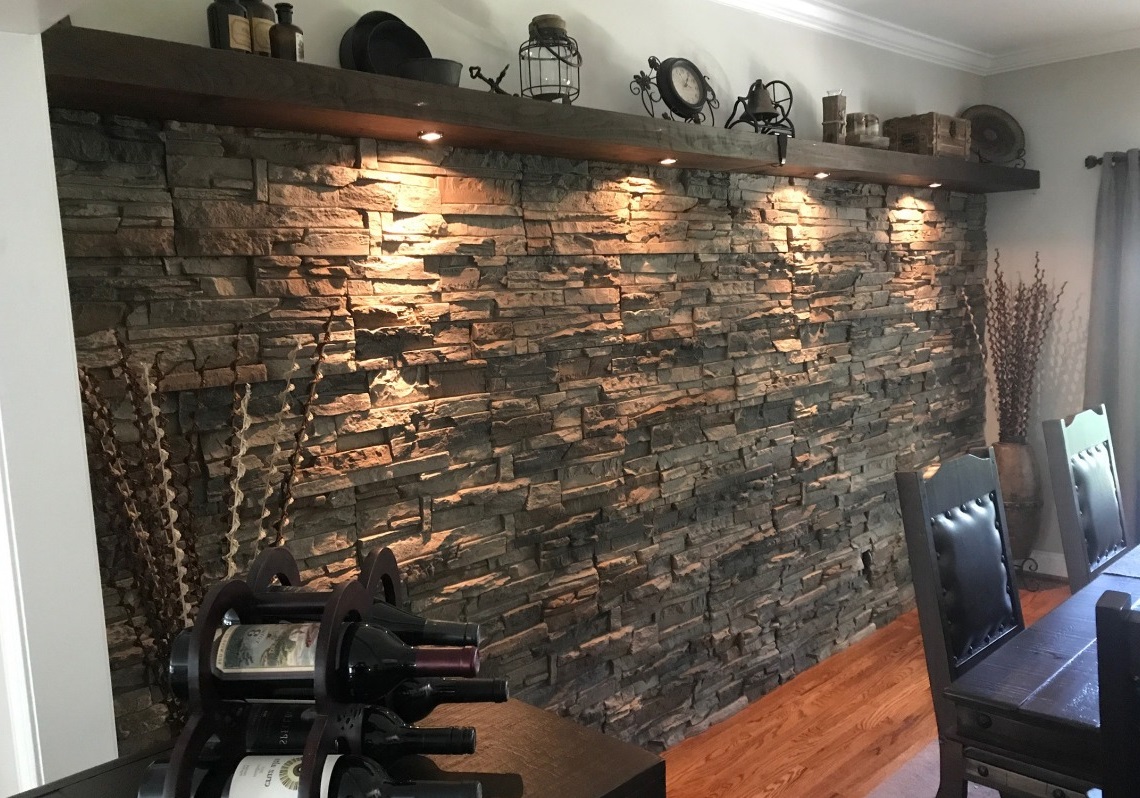
Stone quarry
A kingdom for quarry stone walls. If you’re lucky enough to live in a historic home like this, it’s best not to touch the walls at all. Quarry stone walls are part of the history of culture and the earth: each stone was created from rock debris and weathering, or during working in the mine. Currently, the construction of quarried stone walls is almost never done because the process is too time consuming and expensive and requires technical skills that are rarely taught.
Field stone
Less seamless, but very similar in construction, is field masonry, consisting of large and small stones, some of which were transported from Scandinavia to Germany during the last ice age. You’re almost reminded of the inside of an old church. Combined with contemporary furniture, an impressive living room is created.
The masonry is visible through natural or artificial facing stones
Facing stone is artificial or natural stone. They are used decoratively, are installed individually by hand using mortar and joint compound and have no load-bearing function. A big advantage over larger wall panels is that the individual stones can be adjusted to fit the wall during processing using a hammer, pliers, or similar. Facing stone is ideal for highlighting a wall or fireplace.
However, you should always pay attention to the fact that facing stones, joint adhesives and mortars can expand to varying degrees under the influence of heat (for example from a fireplace). Coating stones made of plastic such as Styrofoam should be kept away from heat sources. However, they make up for their lack of heat resistance with their low weight, which makes installation easier.
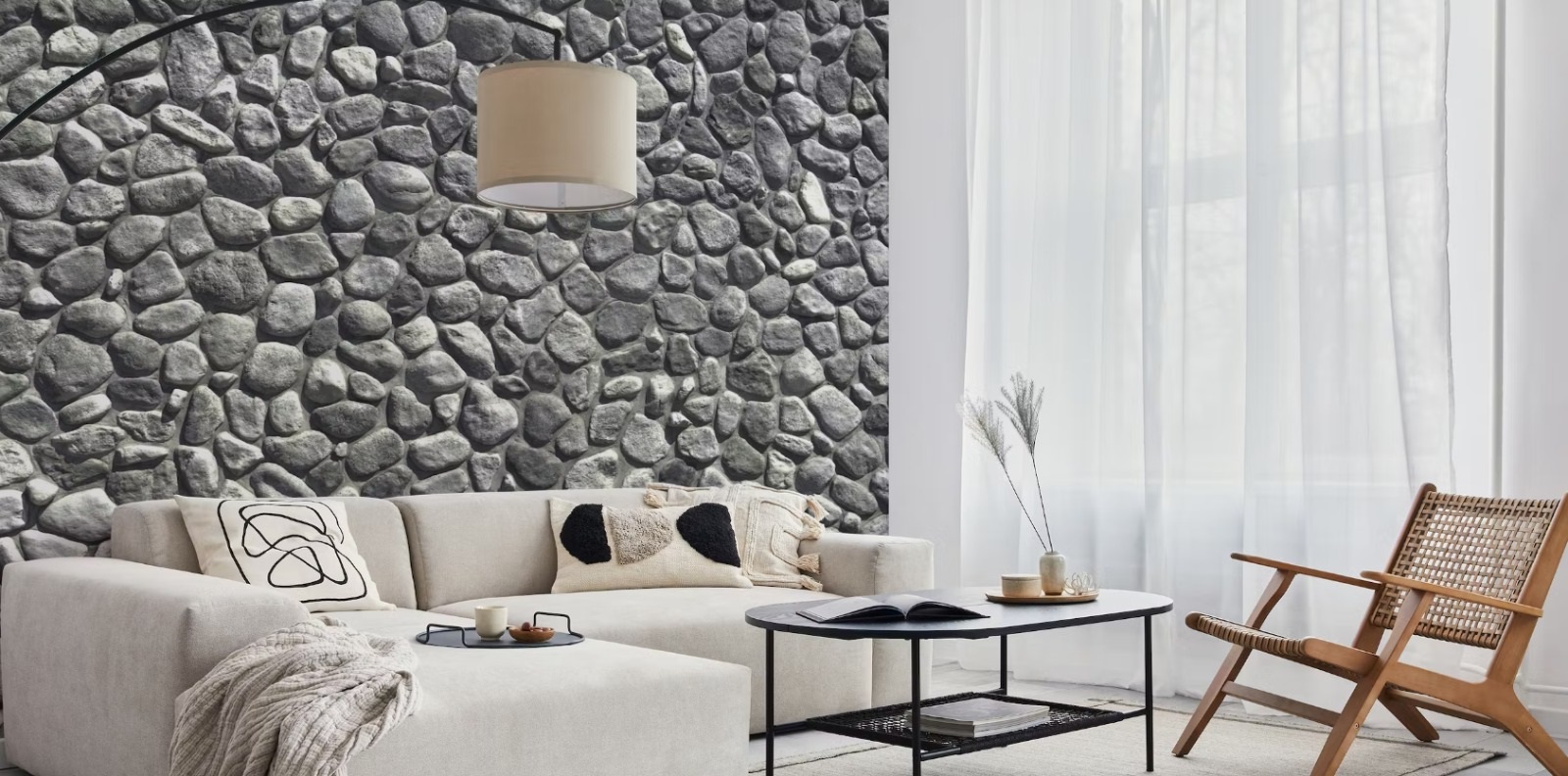
Pair with river pebbles
You don’t need to despair if you’re not lucky enough to live in an old house with original stone carvings. Facing stones made from river pebbles, for example, are ideal for giving your living room a cottage feel. It is true, this is a relatively expensive conversion option: the stone costs between 5 and 25 euros per kilo.
Wall panels are made of real stone or artificial stone
Wall panels are easy to install and dismantle – thanks to the larger area, work can be done more quickly compared to facing one stone at a time. If you think the feel is as important as the look, you can use elements with a natural stone finish. Another advantage is the heat-resistant natural material: thanks to the outer covering made of real stone, such wall panels can also be installed near the fireplace.
In terms of assembly, wall panels have the advantage that they can be installed easily. When it comes to corners and edges, the panel system helps create beautiful transitions – any layman can turn their living room into a stone temple.
Manufacturers offer a variety of stone panels to choose from – from a dry stone look to a sandstone look. You should always look at the panels on site – depending on the price and quality, the appearance of artificial stone can be more or less convincing.
Whether facing stone or panel:
When deciding whether to support or reject artificial stone, you should be aware that artificial stone slabs made of plastic or styrofoam will continue to add to the pile of plastic waste in the world if you already have enough.
Thin slate or real stone veneer
Do you want natural stone in your room, but don’t want it to look rustic but as modern as possible? Then slate may be the right choice. The flat, dark colored natural stone exudes majesty and serenity so it is very suitable for lovers of urban aesthetics.
The stone is at the same time insensitive to water and dirt and, like thin slate, can be processed to very small thicknesses (1.5-2 mm). A real argument for use in the interior, because you want to waste as little space as possible. Thin slate is also easier to transport and impresses with a consistent impression of high quality.
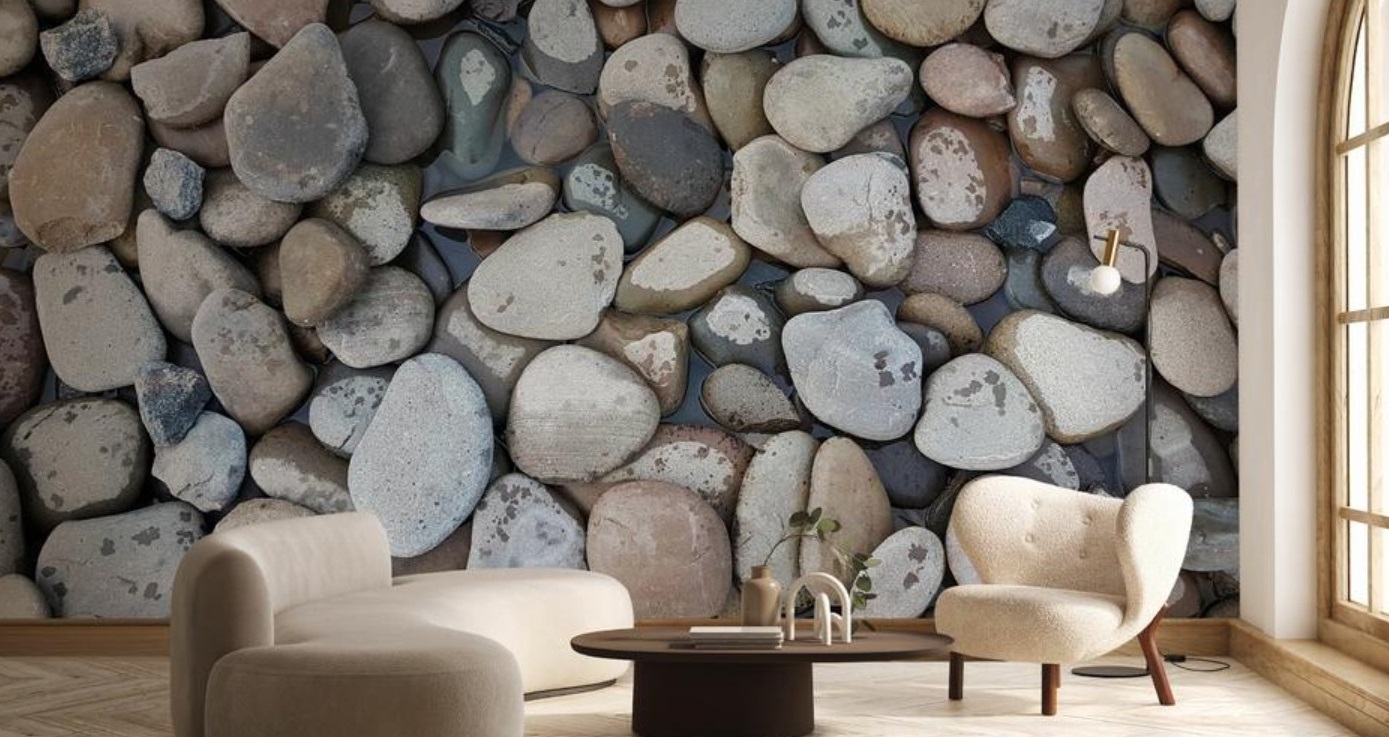
Photo wallpaper with a stone look
There is a long tradition of tricking the eye and emulating three dimensions on a two-dimensional surface. In the past, this type of illusionism aimed to make buildings appear bigger and wider and provide fantastic views of the landscape. Today, wall murals create a similar trick.
This section of wall really catches the eye thanks to Komar’s stone-look wallpaper. With a small budget and a little time, you can achieve amazing effects.
Stone non-woven wallpaper looks spacious
Non-woven wallpaper is a variety of photo wallpaper and can imitate a variety of materials due to its relief surface. Both samples of the E-Delux impressed with products that looked similar to granite plaster and slate slabs.
Thanks to its pulp-polyester fiber mixture, non-woven wallpaper is very easy to process. Thanks to its tear resistance, it is also ideal for hiding small surface cracks.
Here also we do not see brick walls, but non-woven wallpaper. Coincidentally, he is relatively insensitive to outside influences. In addition, it can be easily attached, repaired at a later date, and easily removed at the end of its service life.
Home Interior Design Styles: What is Rustic Design?
A Brief History
The origins of rustic interior design can be traced back to the early settlers in the 19th century who built their homes in remote areas of the US. These pioneers had minimal furniture due to limited space and the difficulty of transporting heavy items. As they established their homesteads, they constructed their homes using locally available materials. Despite being vastly different from the traditional European parlors or Colonial styles in the Northeastern states, rustic design exudes its own unique charm.
The Definition of Rustic Style
Rustic interiors prioritize a rugged aesthetic and the showcasing of natural beauty. The aim is to create a serene atmosphere by emphasizing the use of wood, stone, foliage, and other organic elements. Instead of striving for perfect lines, rustic design highlights the individual character of each piece, from the knots in the wood to the rust on metal.
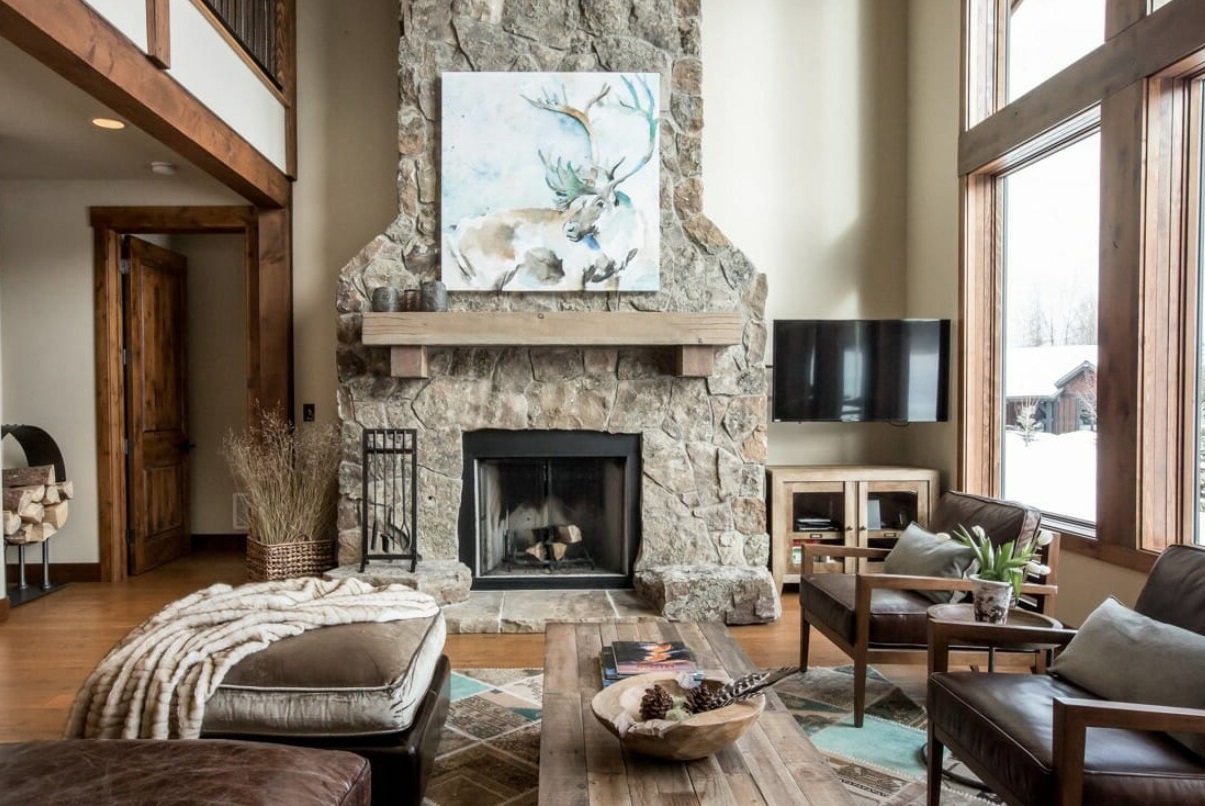
Characteristics of Rustic Interior Design
Rustic interior styles strive to embody a natural essence. It eschews shiny chandeliers, plastic furniture, and cold color palettes, focusing instead on warmth and comfort. From iron accents to hardwood floors, the goal is to evoke the cozy ambiance of a fire. Adding layers of rugs, woven blankets, reclaimed pieces, or furs (real or faux) contributes to a sense of depth.
Design:
Design emphasizes comfort and creating an inviting atmosphere, without the need for perfect coordination.
Incorporates wood elements, with a preference for imperfections and rough construction.
Adorns with other natural elements like stone, foliage, and animal hides or antlers.
Prioritizes simple designs that prioritize function over form.
Color Palette:
Primary colors are inspired by natural surroundings, such as forest greens, rich browns, wood tones, and tans. White is also used for its simplicity and its ability to complement other colors in the room.
Accent colors consist of subdued reds, blues, black, and plaid patterns.
For metal finishes, use iron, copper, brass, or oil-rubbed bronze as accents.
Décor:
Wood is integral to the rustic style, manifested through exposed wood beams, wooden furniture, hardwood floors, or wood-paneled walls.
Fireplaces or wood-burning stoves are customary in this design.
Incorporate various cozy blankets, throws, and pillows.
Embrace different textures with braided rugs, woven fabrics, or baskets.
Art showcases nature, incorporating branches, stones, antlers, or vintage iron elements.
Can You Mix Rustic with Contemporary?
You can certainly combine rustic interiors with contemporary design; they complement each other quite well. Contemporary design favors neutral tones, aligning with rustic’s emphasis on natural colors and textures. Additionally, contemporary design emphasizes clean lines, which can harmonize with rustic’s rugged appeal. The key is to embrace the commonalities between the two styles rather than trying to adhere to the trends of both.
Rustic vs Farmhouse
At first glance, farmhouse design and rustic design share some similarities, as both prioritize comfort and simplicity. However, the approach they take to achieve these goals differs. Farmhouse design is simple but incorporates refined elements, with a few rugged pieces for added charm. On the other hand, rustic or mountain interior styles tend to lean towards rugged or unfinished elements, with a few refined pieces to provide a contemporary touch.
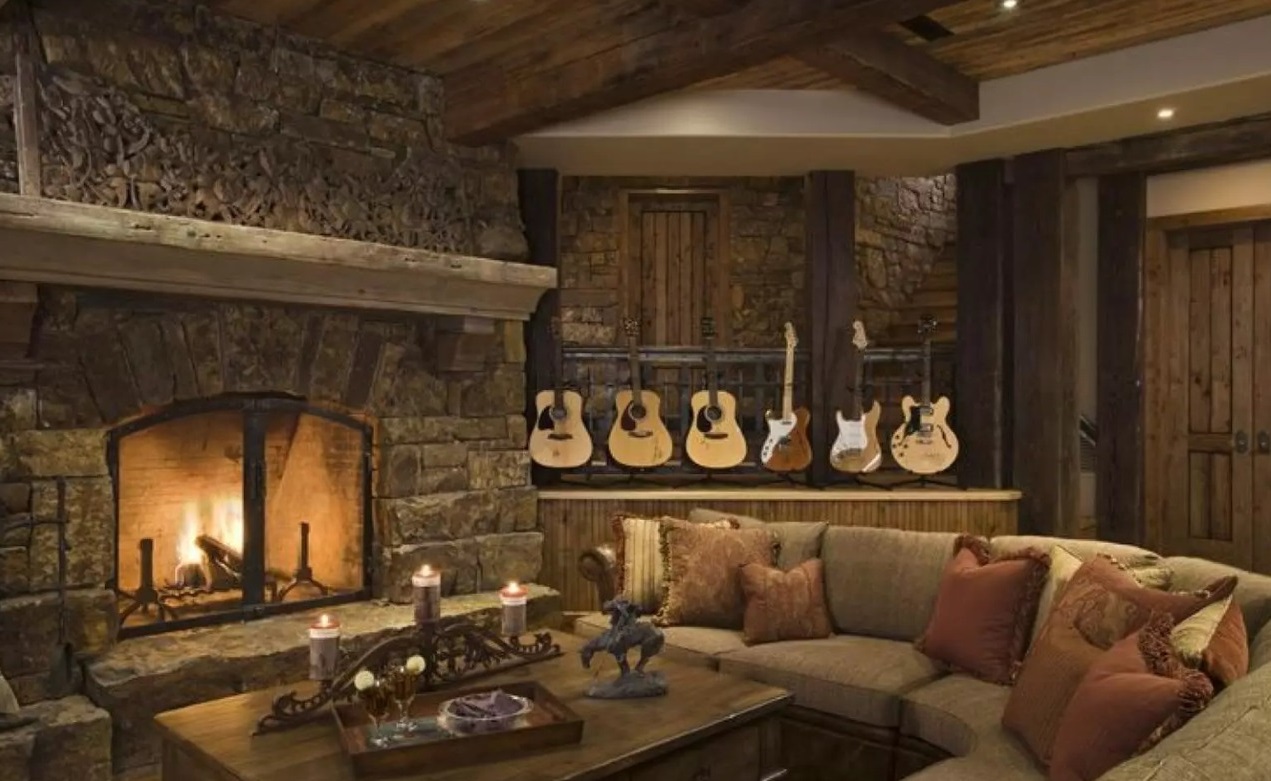
Key Characteristics of the Rustic Interior Design Style
- Use of Natural Materials
Rustic interior design relies on natural materials to create a warm and earthy ambiance, establishing a genuine link to the outdoors. Wood is a prominent feature, showcased through exposed wooden beams, hardwood floors, and wooden furniture. The wood is often in its natural state, highlighting the beauty of natural grains and imperfections. Stone is also frequently integrated, whether in the form of fireplaces, accent walls, or rustic stone floors.
- Earthy Color Scheme
Rustic interiors draw inspiration from the natural environment with a predominance of earthy tones. Rich browns reflect the color of tree bark, while warm reds and terracotta represent the earth’s warmth. Forest greens mirror the hues of the woods, fostering a peaceful atmosphere. These colors are often complemented with neutral shades like beige and off-white to allow the primary palette to stand out.
- Cozy Textures
Textures are highly important in rustic interior design. Soft and warm textures, such as wool, cotton, and linen, are frequently seen in upholstery, throw pillows, and blankets, contributing to an inviting and comfortable ambiance. On the other hand, rough textures like exposed wood beams, stone walls, and distressed furniture impart depth and character to the space, enriching the tactile experience.
- Vintage Elements
Rustic interiors incorporate bespoke handcrafted furniture and decor pieces, often skillfully crafted by artisans. These items can vary from custom-made wooden tables to hand-forged iron fixtures. Additionally, rustic interiors feature vintage heirlooms and antique items, such as aged leather armchairs and distressed wooden dressers. These pieces have stories to tell and infuse a sense of nostalgia into the space.
- Abundant Natural Light
Rustic interiors emphasize large windows and open floor plans to maximize natural light exposure. This approach not only serves a functional purpose but also symbolically brings the outdoors inside. The ample natural light illuminates the space, enhancing the warmth of the earthy colors and showcasing the textures of the natural materials. It fosters a sense of harmony with the environment, seamlessly blending the indoors with the outdoors.
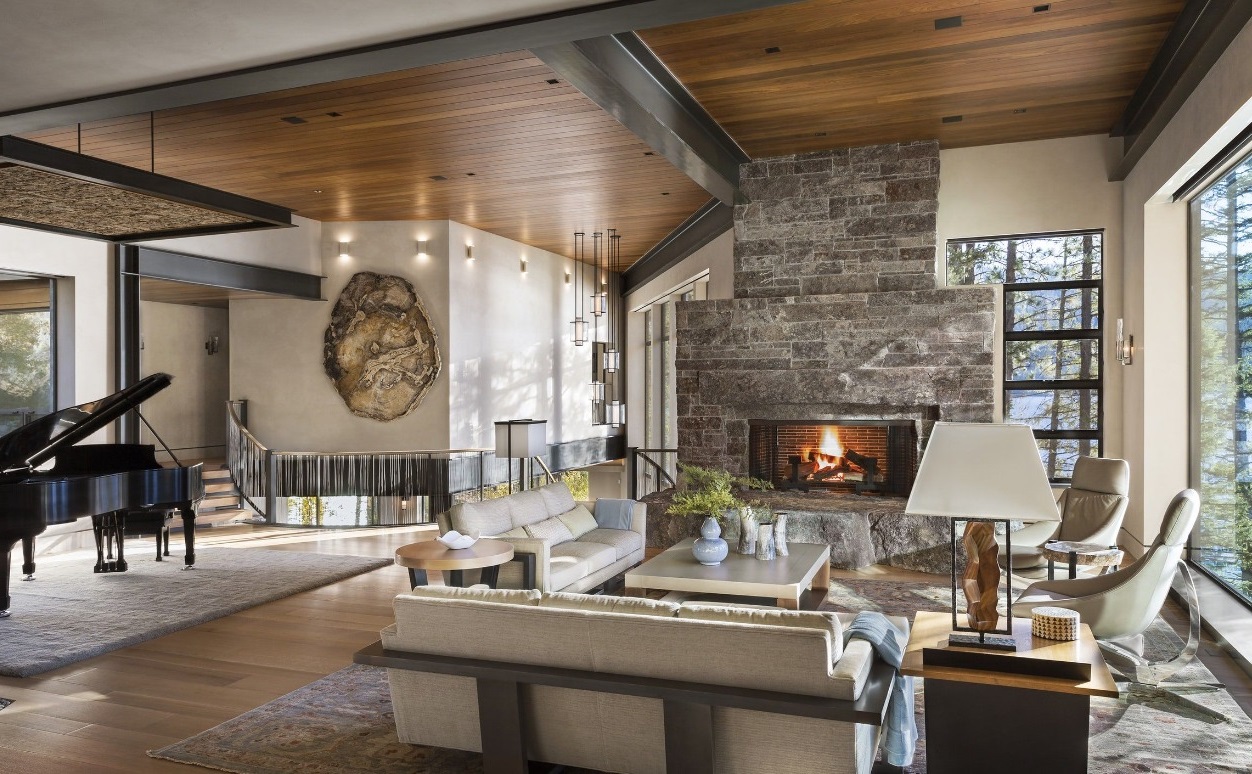
Cues: How to Attain a Rustic Look for Your Home?
Creating a cozy, welcoming, and comfortable living space is the key to designing your home in the rustic interior design style. Listed below are some suggestions you can employ to infuse the rustic style into your home.
- Spacious Layout
A hallmark of rustic interior design, an open floor plan accentuates the idea of space and connectivity, enhancing functionality indoors. It facilitates a seamless flow between the kitchen, dining area, and living room, fostering a sense of togetherness and suiting those who enjoy hosting guests. To achieve this, consider reducing the use of walls and utilizing furniture or decor to delineate different areas of the open space.
- Exposed Structural Features
Essential in rustic design, exposed structural elements like wooden beams, stone walls, or brick accents infuse character and evoke a sense of history within the space. For instance, exposed wooden beams can bring warmth and a hint of rustic sophistication to your home. Maintaining the natural texture and color of these structural features enhances the authenticity of the rustic design.
- Incorporating Nature Indoors
Biophilia, the inherent human connection to nature, is a vital component of rustic interior design. To bring nature into your home, emphasize the use of natural materials and textures and integrate elements of the outdoors inside. This can be achieved through the addition of houseplants, expansive windows providing natural light and scenic views, or features such as indoor waterfalls or fountains.
- Natural Materials and Textures
Rustic design emphasizes the use of natural materials and textures such as wood, stone, metal, and leather. You might want to consider the use of reclaimed or distressed wood for furniture and flooring. Incorporating stone accents, like a fireplace or textured walls, can bring in an earthy ambiance. Leather and cozy textiles like wool and fur are ideal for creating a warm and welcoming atmosphere.
- Vintage Items
Embrace the allure of repurposed furniture to enrich the rustic ambiance. Search for distinctive pieces with character, such as aged wooden dressers, antique tables, and weathered leather sofas. These particulars not only add annals to your home but similarly contribute to the feeling of a country retreat. These elements not only bring a sense of history to your home but also add to the feeling of a rural getaway. Mixing and matching various repurposed pieces allows you to create an eclectic and well-used look that aligns with rustic design.
Rustic Interiors: Embracing Pure Aesthetics
The rustic interior design style creates an atmosphere of coziness and warmth that is perfect for homes. It allows you to personalize your space with heirlooms and other personal belongings, offering a canvas for self-expression. Embracing rustic interiors is more than just a design choice; it’s an invitation to slow down, connect with nature, and appreciate the authentic and enduring beauty of imperfections.
